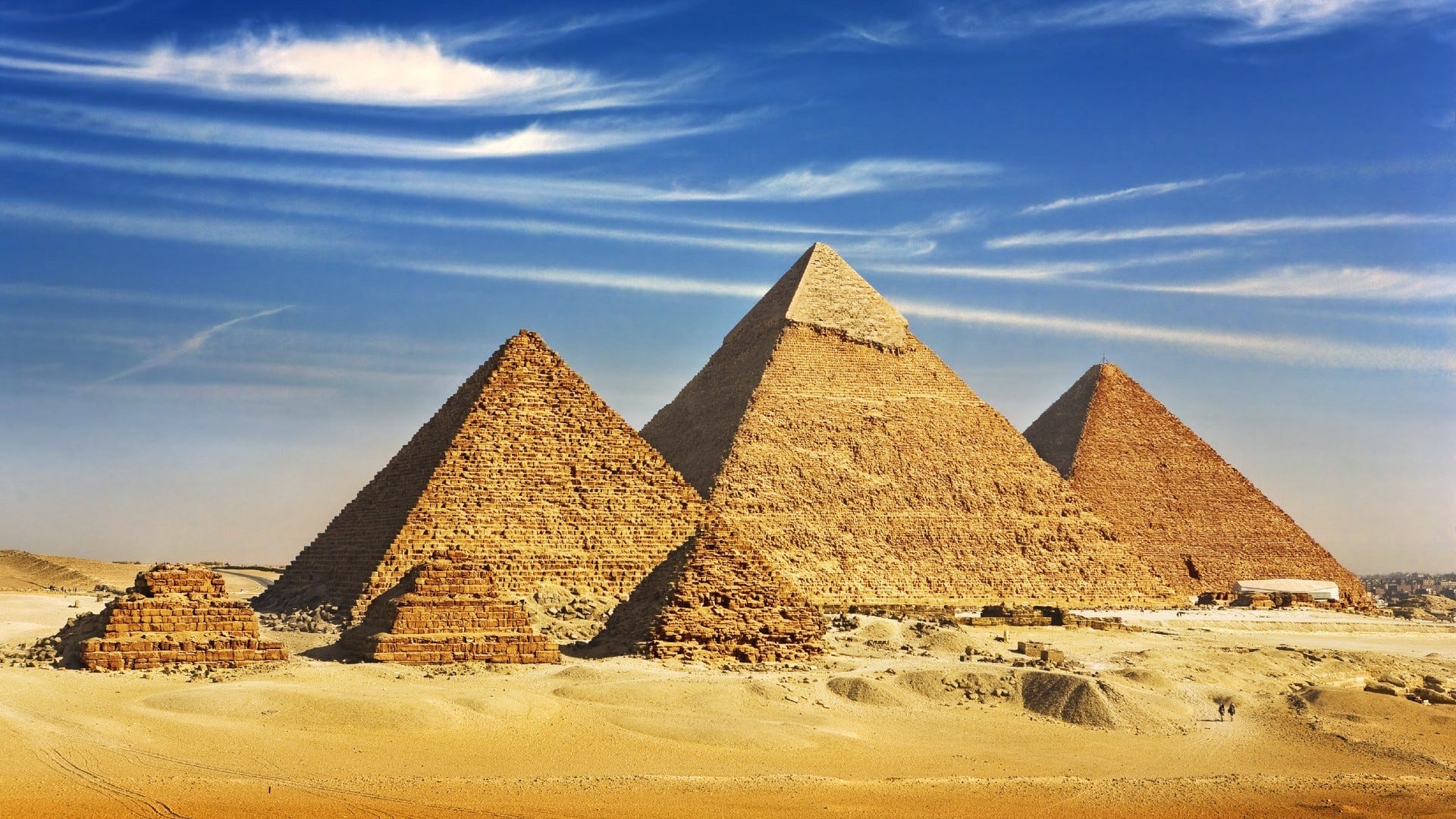Have you ever gazed up at the colossal pyramids and wondered about their true purpose? While the mainstream explanation points to their function as tombs for ancient rulers, some propose a more unconventional theory: that pyramids served as landing pads for extraterrestrial visitors. This article delves into the intriguing arguments for and against this idea, exploring whether the pyramids were ancient Egypt’s welcome mat for beings from beyond the stars.
Beyond Tombs: Exploring the Alien Landing Pad Theory
Imagine this: giant pyramids, bathed in moonlight, acting as beacons for spaceships descending from the night sky. It sounds like something straight out of a science fiction movie, right? Surprisingly, the concept of pyramids as alien landing pads has been around for decades, capturing the imaginations of those who see the potential for more than meets the eye in these ancient structures.
Proponents of the theory often point to the sheer scale and precision of the pyramids, questioning how ancient civilizations, with supposedly limited technology, could have constructed such monumental works. The precise alignments of some pyramids with celestial bodies, the massive stone blocks seemingly too heavy for human hands to move—these factors fuel speculation about the potential involvement of advanced extraterrestrial beings.
Adding to this intrigue is the influence of pop culture, particularly the science fiction series Stargate. In the show, the fictional archaeologist Dr. Daniel Jackson, [https://www.lolaapp.com/5-pharaoh-curses] faces ridicule from the scientific community for his theory that pyramids were, in fact, landing docks for powerful alien beings known as the Goa’uld. While fictional, the show tapped into a wellspring of public fascination, prompting many to question whether real-life pyramids might hold similar secrets.
Unveiling the Tombs: Evidence from Within
While the alien landing pad theory is captivating, the prevailing view within archaeology holds that pyramids were, indeed, elaborate tombs for pharaohs—powerful rulers considered to be divine. Decades of research have uncovered compelling evidence supporting this interpretation, much of it found within the pyramids themselves.
For instance, the walls within many pyramids are adorned with what are known as “Pyramid Texts,” a collection of spells, hymns, and instructions meant to guide the deceased pharaoh on their journey through the afterlife. These texts offer invaluable insights into ancient Egyptian beliefs about death and the afterlife, reinforcing the idea that pyramids were designed with the pharaoh’s eternal journey in mind.
Furthermore, the presence of mummies, often encased within ornate sarcophagi and surrounded by treasures, provides tangible evidence of the pyramids’ funerary function. From glittering jewels to everyday objects, these grave goods were intended to accompany the pharaoh into the afterlife, ensuring their comfort and status in the next world.
The very structure of the pyramids also aligns with funerary practices. The hidden entrances, descending passages, and subterranean chambers—all these architectural elements were likely designed to symbolize the pharaoh’s descent into the underworld, a common theme in ancient Egyptian mythology.
Deconstructing the Alignments: A Matter of Perspective
One of the most frequently cited pieces of “evidence” for the alien landing pad theory is the alignment of certain pyramids with celestial bodies. While it’s true that some pyramids exhibit remarkable alignments with stars, the significance of these alignments is often misinterpreted.
Ancient Egyptians were keen observers of the night sky, and their understanding of astronomy played a crucial role in their religious beliefs and agricultural practices. It’s likely that the alignment of pyramids with stars and constellations held symbolic importance, reflecting their worldview and their desire to connect the earthly realm with the cosmos.
Moreover, the alignment argument weakens when we consider the sheer number and diversity of pyramids scattered across the globe. From Egypt to Mexico to China, pyramids vary significantly in their design, orientation, and purpose, suggesting that their construction was influenced by a variety of cultural and religious factors rather than a single, unifying blueprint.
Pyramids Revealed: A Glimpse of Original Splendor
When we picture the pyramids today, we often envision weathered stone structures, their surfaces worn smooth by centuries of desert winds. However, this image represents a mere shadow of their former glory. Originally, the pyramids were encased in gleaming white limestone, their surfaces so polished they would have shimmered brilliantly under the Egyptian sun.
These casing stones, meticulously cut and fitted, served not only as a symbol of the pharaoh’s wealth and power but also as a reflection of their spiritual beliefs. The white limestone was associated with the sun god Ra, and its presence on the pyramids is thought to have symbolized the pharaoh’s ascent to the afterlife, their journey mirroring the sun’s path across the sky.
Over time, many of these casing stones were looted, repurposed for other building projects or ground down for mortar, leaving the pyramids with the more rugged appearance we recognize today. Nevertheless, fragments of these original casing stones, along with ancient texts and modern laser scanning technology, provide us with tantalizing glimpses of the pyramids’ former grandeur.
Conclusion: A Legacy of Wonder
While the theory of pyramids as alien landing pads persists in popular imagination, the weight of archaeological evidence suggests that these monumental structures served primarily as elaborate tombs for the pharaohs. The intricate passages, symbolic alignments, and rich burial goods all point to a culture deeply invested in honoring their rulers and ensuring their safe passage into the afterlife.
This is not to say that the pyramids don’t hold mysteries. Even today, archaeologists are making new discoveries, uncovering hidden chambers and deciphering ancient texts that deepen our understanding of these architectural marvels. The pyramids stand as a testament to human ingenuity, creativity, and the enduring power of belief, reminding us that even in the face of overwhelming evidence, a sense of wonder and a thirst for the unknown will always have the power to captivate the human imagination.
- Unlock Elemental 2 Secrets: Actionable Insights Now - April 2, 2025
- Lot’s Wife’s Name: Unveiling the Mystery of Sodom’s Fall - April 2, 2025
- Photocell Sensors: A Complete Guide for Selection and Implementation - April 2, 2025

















1 thought on “Pyramids as Alien Landing Pads: Fact or Science Fiction?”
Comments are closed.